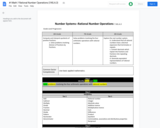
Solve problems involving the four arithmetic operations with rational numbers.
- Subject:
- Mathematics
- Material Type:
- Activity/Lab
- Author:
- Liberty Public Schools
- Date Added:
- 04/12/2021

Solve problems involving the four arithmetic operations with rational numbers.
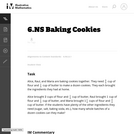
This word problem requires students to use fractions to solve it.

This task was developed by high school and postsecondary mathematics and agriculture sciences educators, and validated by content experts in the Common Core State Standards in mathematics and the National Career Clusters Knowledge & Skills Statements. It was developed with the purpose of demonstrating how the Common Core and CTE Knowledge & Skills Statements can be integrated into classroom learning - and to provide classroom teachers with a truly authentic task for either mathematics or CTE courses.

This task was developed by high school and postsecondary mathematics and design/pre-construction educators, and validated by content experts in the Common Core State Standards in mathematics and the National Career Clusters Knowledge & Skills Statements. It was developed with the purpose of demonstrating how the Common Core and CTE Knowledge & Skills Statements can be integrated into classroom learning - and to provide classroom teachers with a truly authentic task for either mathematics or CTE courses.

In this Cyberchase video segment, Shari Spotter gets help from the CyberSquad in doubling a recipe for crumpets.

Math in Real Life (MiRL) supports the expansion of regional networks to create an environment of innovation in math teaching and learning. The focus on applied mathematics supports the natural interconnectedness of math to other disciplines while infusing relevance for students. MiRL supports a limited number of networked math learning communities that focus on developing and testing applied problems in mathematics. The networks help math teachers refine innovative teaching strategies with the guidance of regional partners and the Oregon Department of Education.
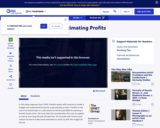
Franklin works with Laverne to create a budget for a job painting a room, in this video segment from TV 411.
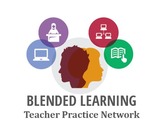
In this problem-based learning module, students will be given the chance to plan their idea of the perfect party. They are given a budget of $2,500, this is the maximum amount of money they can use. The goal is for students to plan a party that they think people would want to attend and would enjoy being a part of. The students will need to come up with categories of what their party will need (food/drink, decorations, entertainment, location, etc). These will then be the stations students will move at their own pace through to complete the party planning. At each station they will need to identify what they are doing to have/do for the party and how much it will cost. They will then have to figure out the unit cost (cost per person) for that category. The final station should allow for students to find the total cost of their part and total unit cost per person for the party. If the total cost exceeds $2,500 students should make adjustments as needed.Students will then create an advertisement (commercial, flyer, poster etc.) to promote their party as the “PARTY OF THE YEAR!”Students will then present these advertisements to school staff, parents, administrators etc. to vote on the party they would want to throw for their own child. They should take into consideration cost per person, entertainment, and enjoyment of the party.
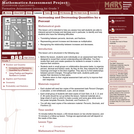
This lesson unit is intended to help teachers assess how well students are able to interpret percent increase and decrease, and in particular, to identify and help students who have the following difficulties: translating between percents, decimals, and fractions; representing percent increase and decrease as multiplication; and recognizing the relationship between increases and decreases.
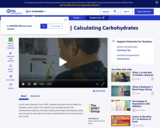
A patient discusses diabetes and how he manages his carbohydrate intake in this video segment from TV 411.
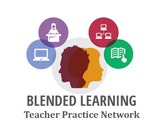
During this problem-based blended learning module students will be designing their dream bedroom as well as creating a scale drawing of the items they chose to be in their bedroom. The launch activity introduces the students to Scale City, which is a video that explores scale models in the real world. Students are then given dimensions for a fictional bedroom to furnish with items of their choosing. Price is not considered in this module, but a budget could be introduced as an extension of the module. Students will then spend time researching items that they would want to place in their bedroom with the area constraints given. Students will have the opportunity to provide each other peer feedback on their bedroom designs. Once students have a rough idea of their bedroom design, they will spend some time creating a scale drawing of their bedroom on graph paper. This will give students the opportunity to use a scale factor to create a scale drawing. Students will again be provided feedback on their designs and be given time to reflect and redesign as needed. If students need extra time to practice using a scale factor and creating scale models, a station rotation lesson has been included as an optional resource.
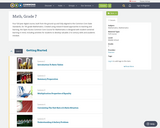
Four full-year digital course, built from the ground up and fully-aligned to the Common Core State Standards, for 7th grade Mathematics. Created using research-based approaches to teaching and learning, the Open Access Common Core Course for Mathematics is designed with student-centered learning in mind, including activities for students to develop valuable 21st century skills and academic mindset.

Students explore the relationship between the flapping frequency, the amplitude, and the cruising speeds of a variety of animals to calculate their Strouhal numbers.Key ConceptsStudents are expected to use the mathematical skills they have acquired in previous lessons or in previous math courses. The lessons in this unit focus on developing and refining problem-solving skills. Students will:Try a variety of strategies to approaching different types of problems.Devise a problem-solving plan and implement their plan systematically.Become aware that problems can be solved in more than one way.See the value of approaching problems in a systematic manner.Communicate their approaches with precision and articulate why their strategies and solutions are reasonable.Make connections between previous learning and real-world problems.Create efficacy and confidence in solving challenging problems in a real-world setting.Goals and Learning ObjectivesAnalyze the relationship between the variables in an equation.Write formulas to show how variables relate.Communicate findings using multiple representations including tables, charts, graphs, and equations.

Students create a bar graph showing the Strouhal numbers for a variety of birds and bats and use their graph and other data to compare the Strouhal numbers of the different animals to analyze variation and to make predictions.Key ConceptsStudents are expected to use the mathematical skills they have acquired in previous lessons or in previous math courses. The lessons in this unit focus on developing and refining problem-solving skills. Students will:Try a variety of strategies to approaching different types of problems.Devise a problem-solving plan and implement their plan systematically.Become aware that problems can be solved in more than one way.See the value of approaching problems in a systematic manner.Communicate their approaches with precision and articulate why their strategies and solutions are reasonable.Make connections between previous learning and real-world problems.Create efficacy and confidence in solving challenging problems in a real-world setting.Goals and Learning ObjectivesAnalyze the relationship among the variables in an equation.Write formulas to show how variables relate.Calculate ranges of Strouhal numbers and use these ranges to make predictions.Communicate findings using multiple representations including tables, charts, graphs, and equations.Create bar graphs.

Working With Rational Numbers
Type of Unit: Concept
Prior Knowledge
Students should be able to:
Compare and order positive and negative numbers and place them on a number line.
Understand the concepts of opposites absolute value.
Lesson Flow
The unit begins with students using a balloon model to informally explore adding and subtracting integers. With the model, adding or removing heat represents adding or subtracting positive integers, and adding or removing weight represents adding or subtracting negative integers.
Students then move from the balloon model to a number line model for adding and subtracting integers, eventually extending the addition and subtraction rules from integers to all rational numbers. Number lines and multiplication patterns are used to find products of rational numbers. The relationship between multiplication and division is used to understand how to divide rational numbers. Properties of addition are briefly reviewed, then used to prove rules for addition, subtraction, multiplication, and division.
This unit includes problems with real-world contexts, formative assessment lessons, and Gallery problems.

Students use the distributive property to rewrite and solve multiplication problems. Then they apply addition and multiplication properties to simplify numerical expressions.Key ConceptsThe distributive property is stated in terms of addition: a(b + c) = ab + ac, for all numbers a, b, and c. However, it can be extended to subtraction as well: a(b − c) = ab − ac, for all numbers a, b, and c. Here is a proof. (We have combined some steps.)a(b − c)Original expression= a(b + (−c))Subtracting is adding the opposite.= a(b) + a(−c)Apply the distributive property.= ab + a(−1 ⋅ c)Apply the property of multiplication by −1.= ab + −1(ac)Apply the associative and commutative properties of multiplication.= ab + −(ac)Apply the property of multiplication by −1.= ab − acAdd the opposite is subtracting.We can use the distributive property to make some multiplication problems easier to solve. For example, by rewriting $1.85 as $2.00 − $0.15 and applying the distributive property, we can change 6($1.85) to a problem that is easy to solve mentally.6($1.85)=6($2−$0.15)=6($2) − 6($0.15)=$12 − $0.90=$11.10One common error students make when simplifying expressions is to simply remove the parentheses when a sum or difference is subtracted. For example, students may rewrite 10 − (6 + 9) as 10 − 6 + 9. In fact, 10 − (6 + 9) = 10 − 6 − 9. To see why, remember that that subtraction is equivalent to adding the opposite, 10 − (6 + 9) = 10 + [−(6 + 9)]. Applying the property of multiplication by −1, this is 10 + (−1)(6 + 9). Using the distributive property, we get 10 + (−6) + (−9) = 10 − 6 − 9.Goals and Learning ObjectivesApply addition and multiplication properties to simplify numerical expressions.
![OREGON MATH STANDARDS (2021): [7.NS]](https://img.oercommons.org/160x134/oercommons/media/courseware/lesson/image/13138_ODE_Math_Logo_2018-H_color_BvjqVNy.png)
The intent of clarifying statements is to provide additional guidance for educators to communicate the intent of the standard to support the future development of curricular resources and assessments aligned to the 2021 math standards. Clarifying statements can be in the form of succinct sentences or paragraphs that attend to one of four types of clarifications: (1) Student Experiences; (2) Examples; (3) Boundaries; and (4) Connection to Math Practices.

WNBA athletes discuss attendance at basketball games in terms of percentages in this video segment from TV 411.
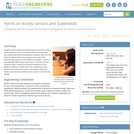
Students are introduced to several types of common medical sensor devices, such as ear and forehead thermometers, glucometers and wrist blood pressure monitors; they use the latter to measure their blood pressure and pulse rates. Students also measure their heights and weights in order to calculate their BMIs (body mass index). Then they use the collected data to create and analyze scatterplots of the different variables to determine if any relationships exist between the measured variables. Discussions about the trends observed and possible health concerns conclude the activity.
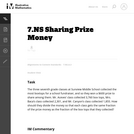
This task requires students to be able to reason abstractly about fraction multiplication as it would not be realistic for them to solve it using a visual fraction model. Even though the numbers are too messy to draw out an exact picture, this task still provides opportunities for students to reason about their computations to see if they make sense.